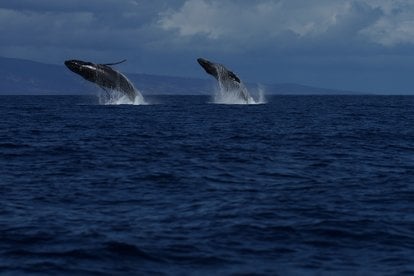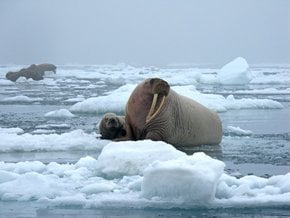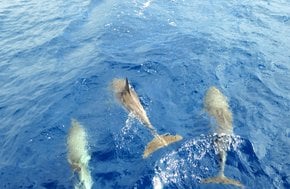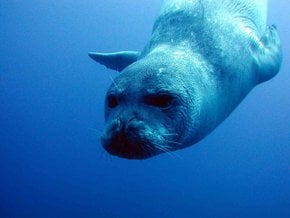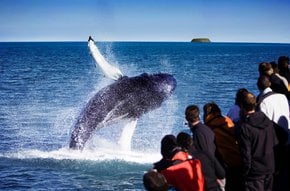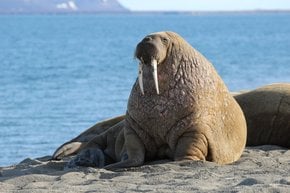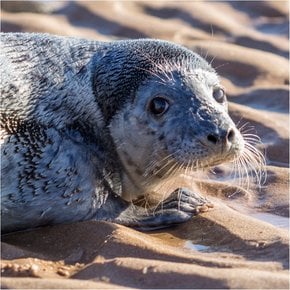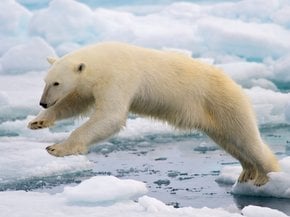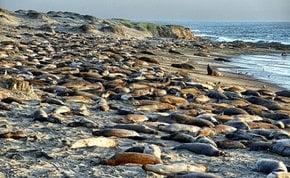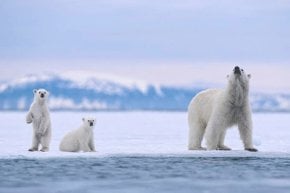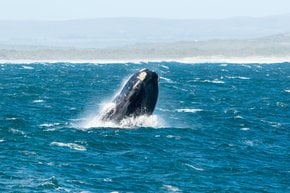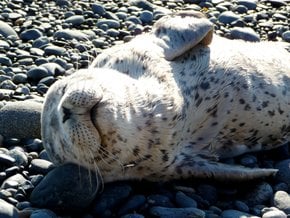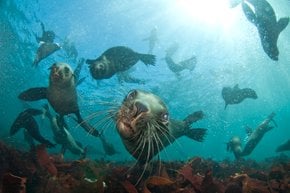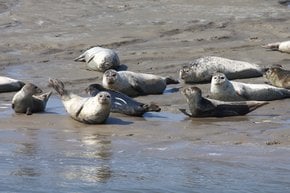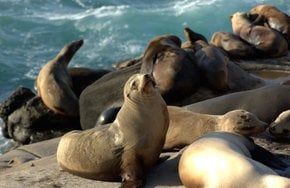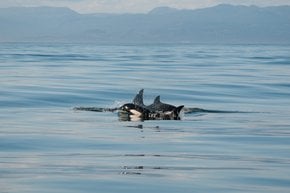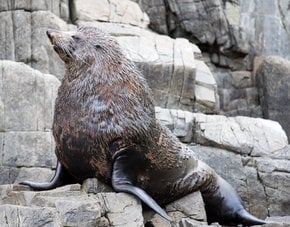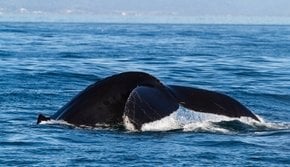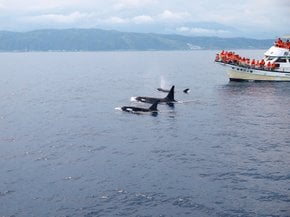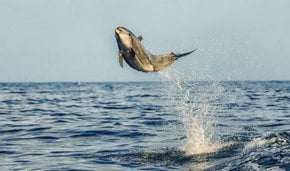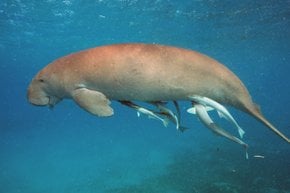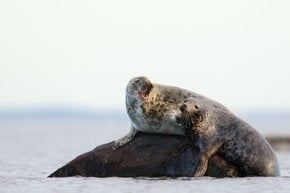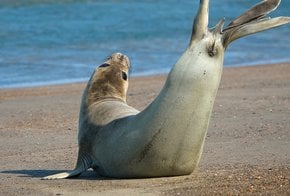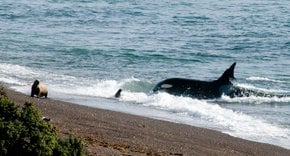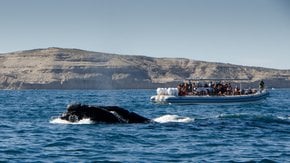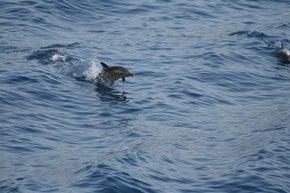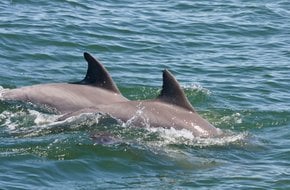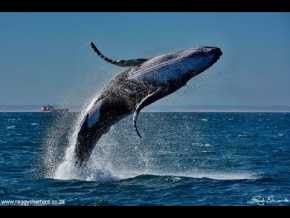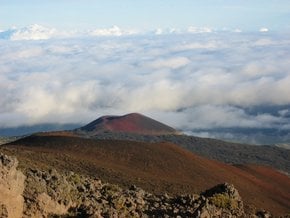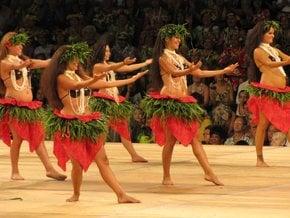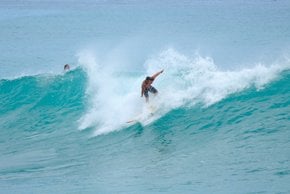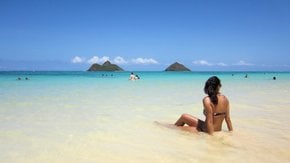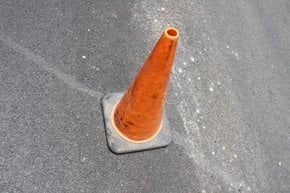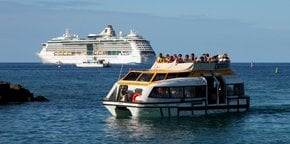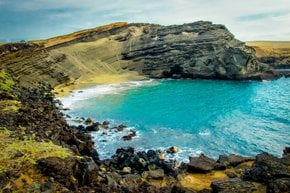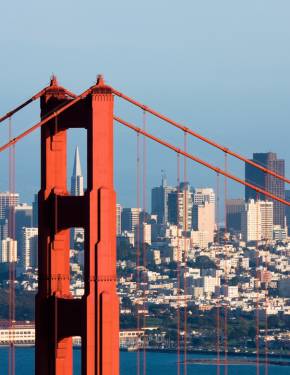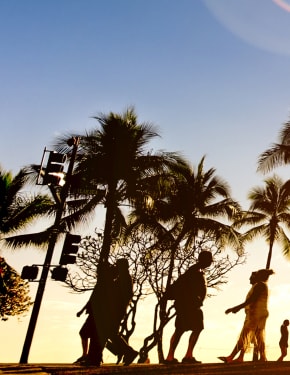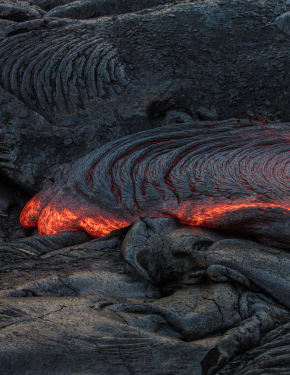Whale Watching in Hawaii 2026
A spectacular and moving show of whales with their calves cresting and breaching around your boat
Best time: mid-November–early May| best: January–March
Between eight and ten thousand humpback whales travel long distances each year from the North to spend January through March in Hawaiian waters. The Hawaii whale-watching season offers a unique opportunity to observe these magnificent creatures in their natural habitat, near the islands where they breed, give birth, and raise their young calves in safety.
These playful sea mammals can be observed near the Big Island (Hawaii Island), Oahu, Maui, Kauai, and Niihau. The largest concentration of whales is typically spotted at the Hawaiian Islands Humpback Whale National Marine Sanctuary, which encompasses the Maui Nui region (between Maui, Lanai, Molokai, and Kahoolawe).
While humpback whales are the most frequently seen species in Hawaii, over two dozen other sea mammals can also be spotted around the islands throughout the year, including rare pygmy killer whales and short-finned pilot whales.
Whale-Watching Season in Hawaii
Whales begin to arrive in Hawaii in mid-November and depart for Alaska by early May, with peak numbers usually seen in January, February, and March. If you go whale watching between mid-November and December, you may spot mother whales with their young calves, who arrive in Hawaii first, along with some juvenile whales. The winter months are when you can see many adult humpbacks and pregnant females. During their stay in Hawaii, whales engage in a variety of breeding activities, including courtship, competition for mates, mating, calving, and nursing their newborns. February is an especially good time to spot humpback whales, both from the shore and at sea. Additionally, this month hosts the annual Maui Whale Festival, featuring a whale count, movie screenings, educational exhibits, seminars, and more.
Whale Watching on the Big Island
The northwest Kohala Coast is often hailed as the best area in Hawaii for whale watching. Whales are also abundant along the western coast of the Big Island, known as the Kona Coast or Kailua-Kona side. Numerous whale-watching tours depart from Kona, offering a range of experiences and boat types, including zodiacs, rafts, sailing catamarans, and cabin cruisers. There are also excellent opportunities to spot whales from the shore, particularly along the North Kona, Hilo coast, and North Kohala regions. Popular whale-spotting locations include Kapa’a Beach Park, Puukohola Heiau National Historic Site, and Lapakahi State Historical Park.
Big Island Whale-Watching Tours
If you prefer whale watching on a smaller boat, you can choose a 2-4 hour excursion on a Zodiac boat that combines whale watching with snorkeling. These boats, accommodating 6-14 passengers, depart from Honokohau Harbor. Alternatively, you might opt for a cruise on a larger two-decked boat. These tours last 2.5 hours and run daily from December through April, departing at 1 pm. Food and drinks are available on board. Tickets for whale watching on the Big Island can be somewhat pricey, ranging from $77 on a larger vessel to $120 on a smaller one.
Whale Watching on Oahu
On Oahu, humpback whales can be spotted as late as early May. Some tour operators offer combined whale-watching and snorkeling experiences that also include encounters with dolphins and turtles. Additionally, whales can be observed from the southeastern coast of Oahu, particularly from Hanauma Bay. Popular whale-watching spots include Makapu'u Lighthouse and Diamond Head.
Oahu Whale-Watching Tours
Many whale-watching boats depart from Honolulu and Waikiki. Some cruises use large 149-passenger catamarans, which are the biggest boats of their kind in Hawaii. These tours typically depart from Honolulu and Ala Wai Boat Harbor in Waikiki four times per week. They are affordably priced at $42 for adults and $26 for children. Additionally, these tours often include a whale guarantee, meaning if you don’t see a whale, you'll receive a “Whale Check” for a free return cruise.
Whale Watching on Maui
Maui is considered one of the best whale-watching destinations in Hawaii, as more than half of the Hawaii humpbacks migrate to the Maui Nui Basin. These sea mammals breed in the protected waters around Maui from November through May. Whale-watching tours regularly depart from Lahaina Harbor, offering opportunities to observe them up close. Additionally, you can spot these magnificent creatures from the shore in Lahaina and Kaanapali.
Maui Whale-Watching Tours
Zodiac tours and rafts are among the most popular options for whale watching on Maui. Some tours use small hydrophone boats, allowing you to hear the whales' songs. If you don't see any whales on your trip, you can often take another tour at no extra cost. Another great option is whale watching on a sailing catamaran. Guided tours on medium-sized vessels, which accommodate about 60 people, provide a comfortable and scenic way to experience these magnificent creatures. Maui is also one of the few places where you can enjoy kayaking with whales. With certain operators, you can spend a few hours kayaking by Makena Beach, combining whale watching with snorkeling over a coral reef. During these tours, instructors guide kayakers to channels where humpback whales can be seen up close.
Whale Watching on Kauai
Kauai is another excellent whale-watching destination. During the winter months, you can spot humpback whales from the island's northern and western shores. Popular whale-watching spots include Kilauea Lighthouse, the Kapaa Overlook between Kapaa Town and Kealia Beach, Poipu Beach, Shipwreck's Beach, Makahuena Point, and the Kalalau Trail along the Napali Coast.
Kauai Whale-Watching Tours
Kauai offers a variety of whale-watching options, including Zodiac boats, sailboats, and private charters. You can choose from several tours, such as 4-hour excursions departing daily from Hanalei Bay and 2-hour Zodiac adventures that include hydrophone equipment and insights from a marine biologist.
Humpback Whale Facts
The graceful and intelligent behavior patterns of North Pacific humpback whales are truly fascinating. As the fifth largest whale species on Earth, they can reach lengths of up to 60 feet (18 meters) and weigh as much as 40 tons. Like humans, humpback whales have two lungs, each about the size of a small car. They sleep with only one side of their brain resting and one eye closed. Humpback whales are unique in that they are the only whale species known to sing. Their songs can be best heard on a hydrophone boat equipped with an underwater microphone, though sometimes their distant songs can even be heard while snorkeling. Interestingly, each humpback whale's flukes are unique, making it easier to identify individual whales. The largest concentrations of humpbacks are typically found around Maui, Lanai, and Molokai.
Hawaii's archipelago rightfully ranks among the top humpback whale destinations in the world, thanks to its abundance of cetaceans, crystal-clear waters, and diverse whale-watching opportunities. It's one of the few places where you can see whales while kayaking or paddling, making it a must-include experience in your vacation plans.
Whale-Watching Tips
Whales are most easily spotted when the weather is clear, and the sea is calm. Morning tours often benefit from fewer waves and calmer conditions. For the best visibility, try to get a seat at the bow of the boat. If you are prone to motion sickness, opting for a larger, more stable boat is advisable. Additionally, small boats such as Zodiacs and rafts may not be the best choice for small children or pregnant women due to their limited stability.
What to Wear
Even on hot days, ocean temperatures can be significantly cooler, so it’s wise to bring a windbreaker or at least a sweater. Opt for long pants and closed-toed shoes with non-slip rubber soles for better comfort and safety. Additionally, protect yourself from harmful UV rays by wearing sunscreen, a sunhat, and sunglasses during your sea adventure.
What to Bring
Bring binoculars and a camera with a telephoto lens to enhance your chances of spotting and photographing sea mammals. Don’t forget to pack extra batteries. Given the likelihood of splashes, especially on small boats or kayaks, consider using a waterproof sleeve or zip bag to protect your phone and photo gear. While packing snacks is not essential, as many large catamarans and sailboats provide food and beverages onboard, smaller Zodiac boats typically offer a basic supply of water for the tour.
Where to Stay
During winter, you have a good chance of spotting whales even from your hotel’s balcony. Opt for accommodations along areas frequently visited by humpbacks, such as South or West Maui or the Kohala Coast on the Big Island. The best months for shore-based whale spotting are January, February, and March. Be sure to bring binoculars and exercise plenty of patience for the best chance of success. Check our map for accommodation options in these prime viewing locations.
Photography Tips
Taking a great whale photo requires patience and quick reflexes. Watch for signs like diving birds, which often signal feeding whales. Focus on areas with bird activity, as the whale may surface suddenly. For shots of breaching or tail flukes, look for a whale arching its back—this usually means it's about to dive. Breaching is harder to predict, but if it happens once, it might happen again. Use a wide-angle lens for ocean scenery and a shorter lens for action shots, as it’s easier to track the whale.
Practical info
External resources
Find hotels and airbnbs near Whale Watching in Hawaii (Map)
- Kohala Coast
- North Kona
- Hilo Coast
- Lapakahi State Historical Park
- Kapa’a Beach Park,
- Puukohola Heiau National Historic Site
- Hanauma Bay
- Makapuu Lighthouse
- Diamond Head
- Honululu Harbor
- Ala Wai Harbor
- Maui Nui Basin
- Lahaina Harbor
- Kaanapali
- Kilauea Lighthouse
- Kapaa Overlook
- Makahuena Point
- Poipu Beach
- Shipwreck’s Beach
- Napali Coast’s Kalalau Trail



